#korean art history
Text


a couple of lee manik's early works depicting agricultural scenes
27 notes
·
View notes
Text


"Brawl Busters" (1978) was a martial arts film that was advertised as being from the "Chinese Black Belt Society" in an opening card. Not only does this group not exist, the movie isn't even Chinese, but Korean. It was common for a lot of Korean films of this era to be set in China and have a Hong Kong cast. The film also was said to star "Black Jack Chan," who not only was not in the film, but also doesn't exist at all. As the images above show, it is a female led martial arts film.

This deeply strange credit to a made up Kung Fu Society and a claim to star a completely made up Chinese leading man was because, as surprising as it is to consider today, there was a time when it was extremely rare to have any entertainment come out of South Korea, and the producers figured it would have a bigger audience in Asia if this film was thought to be from Hong Kong. If it was known to be Korean, it would come off as a knockoff, which, to be fair, it completely was. South Korea was under military rule until the 1980s, and nearly all of its early entertainment industry was based on the blueprint of the cultural capital of Asia in the 70s-80s, Hong Kong, like Hitman in the Hand of Buddha, Woman Avenger (a Korean version of the very Chinese story of Wing Chun, famously played a decade later by Michelle Yeoh). Korean films of this era had many Hong Kong stars like Angela Mao, who made Hapkido and When Taekwondo Strikes in the early 70s there as joint Korean/Chinese productions. It also went both ways: many Korean talent in this era had to emigrate Korea to get into showbusiness, like "Thunderfoot" Hwang Jang Lee. After all...who ever heard of getting famous in entertainment in South Korea, anyway?

184 notes
·
View notes
Text
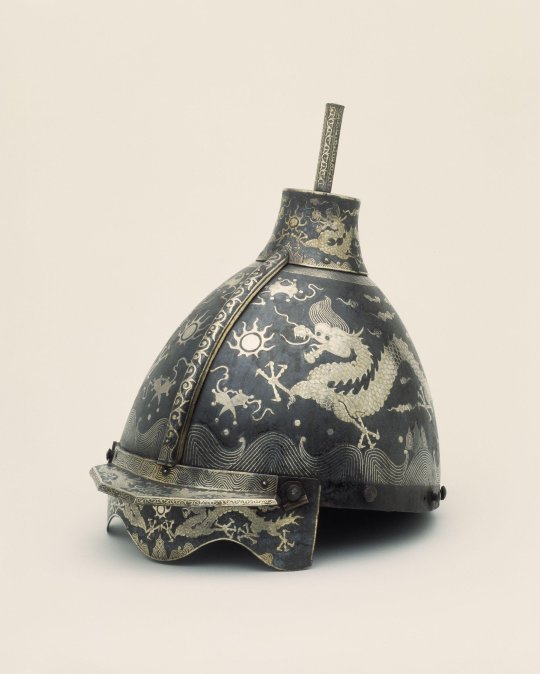

Silver inlaid helmet, Korea, circa 1550-1650
from The Victoria & Albert Museum
735 notes
·
View notes
Text



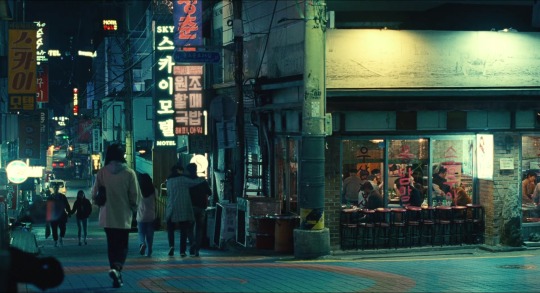



Past lives (2023)
Direction: Celine Song
Cinematography: Shabier Kirchner
#art#art history#artists on tumblr#aesthetic#film photography#film#movie#past lives#celine song#Korea#south korea#korean#oscars 2024#korean film#korean movie#film scenes#film stills#film stuff#film screencaps#film screenshots#beautiful photography#photography#film photograhers#movie stills#movies#movie screenshots#movie screencaps#movie scenes#2023 movies#2023 films
295 notes
·
View notes
Text

Set of Four Painted Characters (hanging scroll), unknown Korean artist, 1800
#art#art history#Asian art#Korea#Korean art#East Asia#East Asian art#Joseon Dynasty#hanging scroll#ink and color on paper#18th century art#Cleveland Museum of Art
72 notes
·
View notes
Text
ART HISTORY WORD LIST
I'm slowly reading a book called 청소년을 위한 한국미술사 (Korean Art History for Youth). In the process I came across many interesting terms that may be useful for those who are interested in Korean art and history and maybe would like to read about such topics in Korean in the future. So I decided to share the vocabulary list. Perhaps, to be continued.
선사 [先史] - prehistory
도안 [圖案] - design
암각화 [巖刻畵] - petroglyphs
청동 [靑銅] - bronze
빗살무늬 토기 - comb-pattern pottery
유물 [遺物] - relic, artifact
미의식 [美意識] - aesthetic sense
창의력 [創意力] - creativity
삼국 시대 [三國時代] - Three Kingdoms of Korea
불교 [佛敎] - Buddhism
부처의 현신 [現身] - the Buddha who appeared in the form of a famine in order to save sentient beings
소재 [素��] - material
국교 [國敎] - established religion
강대국 [强大國] - (world) power, powerful nation
학술 [學術] - scholarship
석총 [石塚] - stone grave
석실봉토무덤 [石室封土무덤] - stone-filled tomb
기원전 [紀元前] - B.C. (Before Christ): 기원전 50년 - 50 B.C.
고고학 [考古學] - archaeology
묘제 [墓祭] - a memorial service held before the grave
전기 [前期] - the former part
평면도 - ground plan (architecture)
초상화 [肖像畵] - portrait
고분벽화 [古墳壁畫] - ancient tomb mural
사당 [祠堂] - shrine
신주 [神主] - ancestral tablet
경외감 [敬畏感] - sense of awe
환희 [歡喜] - (great) joy, delight
전달력 [傳達力]- transmission
구체적 [具體的] - detailed
기인하다 [起因하다] - result from
순수 [純粹] - purity
공예품 - handicraft, craftwork
문화재 [文化財] - cultural properties
보관 [保管] - storage
걸작 [傑作] - masterpiece
보고 [寶庫] - repository
청자 [靑瓷] - celadon
극치 [極致] - the height (of)
영토 [領土] - territory, domain
��주 [滿洲] - Manchuria
수나라 [隋나라] - Sui Dynasty
당나라 [唐나라] - Tang Dynasty
명장 [名將] - great commander
저항하다 [抵抗하다] - resist
패망하다 [敗亡하다] - collapse

#korean#word list#korean vocabulary#korean language#langblr#learning languages#language study#foreign languages#language blog#korean word of the day#hangul#hanja#korean history#korean art#한국어#한국미술사
76 notes
·
View notes
Text


Despite being a pioneer of abstract art in Korea Yoo Young-kuk (1916-2002) is largely unknown in our latitudes. Born into an affluent family of landowners he was able to study at the art school of Bunka Gakuin College in Tokyo, a liberal school that given the close surveillance of Korean students in Japan offered space to breathe, from 1935 until 1943. Yoo quickly embraced abstraction as his artistic language and consequently moved in the avant-garde circles of the Japanese capital. At this time Yoo was influenced by Russian constructivism as well as Jean Arp and Piet Mondrian, artists he was introduced to by Hasegawa Saburo and Murai Masanari, and created geometric reliefs, paintings and also experimented with photography.
These early stages of his career and his mature years following the tumultuous period following the end of the Japanese occupancy of Korea and the Korean War are covered in „Yoo Youngkuk - Quintessence“, published in 2020 by Rizzoli. This first English-language monograph contains a very insightful essay by editor Rosa Maria Falvo and a wealth of works from all of Yoo’s work phases. Falvo provides a brief but concise cross section of the artist’s career with a particular emphasis on Yoo’s development towards his trademark colorfield paintings: after experimenting with postwar Informel Yoo from the mid-1960s on decided to make mountains his primary motif. Yoo’s native region is very mountainous and exposed him to the forces of nature from an early age on. In his colorfield paintings Yoo sought to gain freedom in geometrical forms and primary colors but at the same time tried to capture the visual sensation of the mountains in changing lighting. Although his color palette changed towards pastel in his late work and his health dwindled Yoo Young-kuk painted until the very end of his life.
Being the first English-language monograph „Yoo Youngkuk - Quintessence“ not only provides a thorough introduction to the artist but through the wealth of high-quality reproductions makes accessible the work of a great artist.
22 notes
·
View notes
Text

Why These Imperfect Korean ‘Moon Jars’ Sell for Millions
Old, round, imperfect and beautiful — that’s how fans of Korean art describe the moon jar, or “dalhangari.”
These unassuming, plain white pots have entranced everyone from rapper RM, of K-pop sensation BTS, to philosopher Alain de Botton.
The former director of London’s Victoria and Albert Museum, Beth McKillop, has called the moon jar an “icon of Korean identity.” And if price is any indicator of popularity, one recently sold for over $4.5 million at a Christie’s auction.
This month, a rare example from the late 17th or early 18th century will go on sale at Sotheby’s in New York, where it’s expected to fetch more than $3 million.
“A large moon jar has always been expensive, but I think the big uptick in prices and value is… because their appeal is now global,” said Angela McAteer, Sotheby’s international head of Chinese art for the Americas and Europe, over video call. “You’ve got an international cohort of bidders competing for them, so it’s gone beyond the traditional connoisseur collecting community of Korean art.”

Huge price tags also result from the jars’ rarity. Although made for over a century in the royal kilns of Korea’s last kingdom, the Joseon dynasty, few are thought to exist today. Estimates for the number of larger ones (those more than 40 centimeters, or 15.7 inches, tall and wide) that have survived over the years range from 12 to 30.
Having passed through auction houses and antique dealers across the world, several of these are now in the collections of institutions like the British Museum and Boston’s Museum of Fine Arts, as well as in the hands of private collectors.
‘Owning a piece of happiness’
The first moon jars were created in the royal kilns in Gwangju (a city just outside Seoul, not the larger southern city of the same name) from 1650 to 1750. They were made from pure white porcelain and kaolin clay, and, following the neo-Confucian fashions of their day, the pots reflected values such as propriety, humility, frugality and purity. They were likely used at court and in upper-class homes as containers for food and liquids, or as decorative vessels.
In the mid-20th century, moon jars began gaining international appreciation thanks to influential admirers such as Japanese folk crafts scholar Yanagi Soetsu and British potter Bernard Leach, who bought one from a Seoul antique store in 1935. Leach once said that having a moon jar was like “owning a piece of happiness,” and would later give his to fellow potter Lucie Rie for safekeeping during World War II. It stayed in her studio until her death and was later acquired by the British Museum.
Charlotte Horlyck, lecturer in Korean Art History at the University of London’s School of Oriental and African Studies, wrote in the Art Bulletin journal that after World War II the moon jar “caught the attention of an early generation of postcolonial Korean artists and scholars who sought to restore Korean art history and national identity,” as the pieces “resonated with the visual language of international modernism and minimalism of the mid-20th century while remaining a distinctly Korean work of art.”
The moon jar’s allure
When Sotheby’s announced its forthcoming sale, the auction house described its 44-centimeter (17.3-inch) moon jar as an object that inspired, astounded and soothed those who “stand in its presence.” It’s a funny thing to say about a pot, to speak as if it’s alive, but the jars’ visceral, emotional impact on people is something that comes up time and time again in the literature.

Choi Sunu, a former director of the National Museum of Korea, has described the museum’s moon jars as being like companions, or muses that have inspired his writing and stirred his creativity. Bernard Leach admired the pots for their “natural unselfconsciousness.” In 2012, South Korea’s then-Unification Minister Yu Woo-ik used the pot as a metaphor symbolizing a reunified Korean peninsula (moon jars are created in two hemispherical pieces and joined in the middle).
More recently the rapper RM, of K-pop group BTS, posted a picture of himself hugging a modern-day moon jar on Twitter, telling fans that the pots made him feel calm.
“It’s hard for someone to really comprehend how a pot can make you feel that way,” said McAteer. “It has this real meditative presence. If you’ve sat in front of a great (painting by US artist, Mark) Rothko and you feel this kind of palpable energy emanate from it, and you could sit for hours and just feel something in its presence — the moon jar has that too.”
“The more you look at it, the more there is to see. It looks different from every angle,” she added. “We had real issues with the photography and the catalog because it looks like a different piece every time you rotate it, or you change the lighting. The surface is just alive, you know.”
“You can see how the glaze coalesces; you see these spontaneous bursts of this blush color that’s happening in the firing. You can lose yourself in its surface.”
Modern masters
Modern Korean potters have been inspired by the jars, and a number have come up with their own homages. Ceramist Kim Syyong covers his pots with a black glaze, while Yun Ju Cheol’s versions look spikier like a pufferfish and Choi Bo Ram’s unvarnished, textured blue vases have a denim-like quality.
Others, like Kwon Dae Sup, have looked to closely recreate the process used by the potters of yore. The 71-year-old ceramist produces unadorned white jars and allows for all the beautiful imperfections produced to shine through. He works out of a studio in Gwangju, where the royal kilns that produced moon jars were once located.


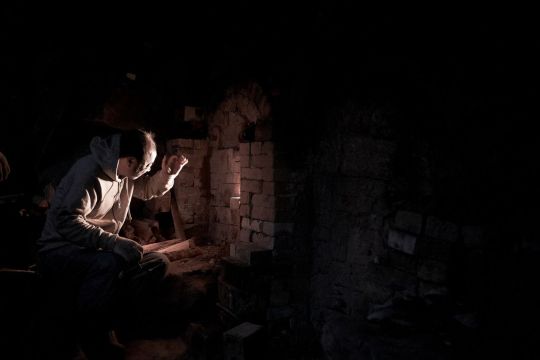
There’s a great deal of preparation that goes into making a moon jar traditionally. It’s labor-intensive: washing, sifting impurities from the clay, kneading and rolling it to remove air bubbles, carrying around these large hunks, not to mention hand throwing the clay itself to that oversized bowl shape without collapsing, and the work keeping a pine wood fire burning for 24 hours while the pot hardens in the kiln. Kwon also built his own kiln to replicate the old process as closely as possible.
“I do this because it’s fun,” he said in a phone interview. “Every time I make something, it’s novel … The quality of the material is different every time. The conditions in which I make the pots is new every time.”
Kwon said he also feels an emotional connection to the moon jar. As a student he was so moved by a one he saw in a Korean antique store that he decided they would be his life’s work. “They feel alive,” he said.
In a 2019 book on his work by Axel Vervoodt Gallery the potter is quoted saying he tries to produce art that needs no addition or subtraction. “I wish to create work that has an imposing presence but harmonizes with its surroundings regardless of where and when it is displayed. It should give peace of mind and a sense of comfort to all who look at it.”
By Christy Choi.
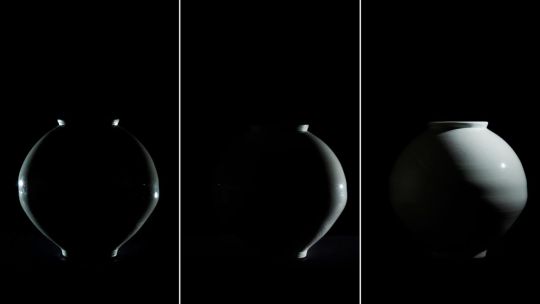
#Moon Jars#Why These Imperfect Korean ‘Moon Jars’ Sell for Millions#Dalhangari#Joseon dynasty#pottery#porcelain#Bernard Leach#Lucie Rie#Kwon Dae Sup#ancient artifacts#archeology#archeolgst#history#history news#ancient history#ancient culture#ancient civilizations#korean history#korean art#art#artist#art work#art world#art news#long reads
133 notes
·
View notes
Text
youtube
Kim Jung Mi, singer of one of my favorite albums of all time: 'Now' from 1973, preforms live in rare footage above. If you like it, I highly recommend listening to the rest of her discography!
#vintage#history#retro#art#music#1970s#feminism#kpop#korea#korean#black and white#artists on tumblr#Youtube#bts#south korea#aesthetic#spotify
12 notes
·
View notes
Text
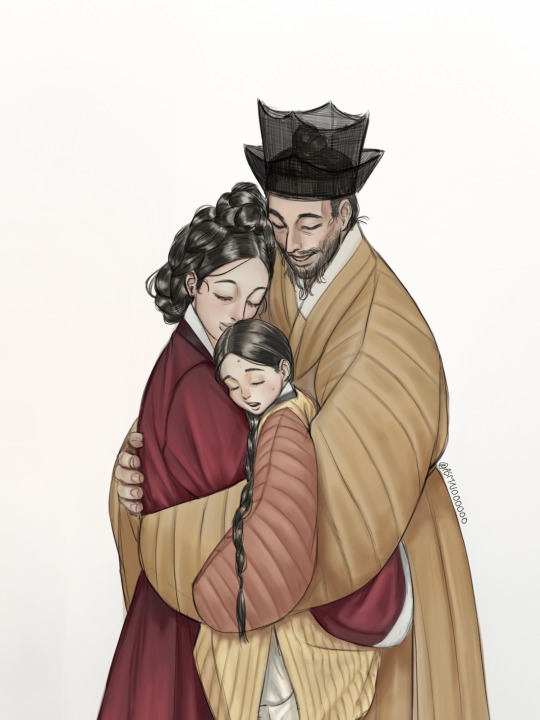
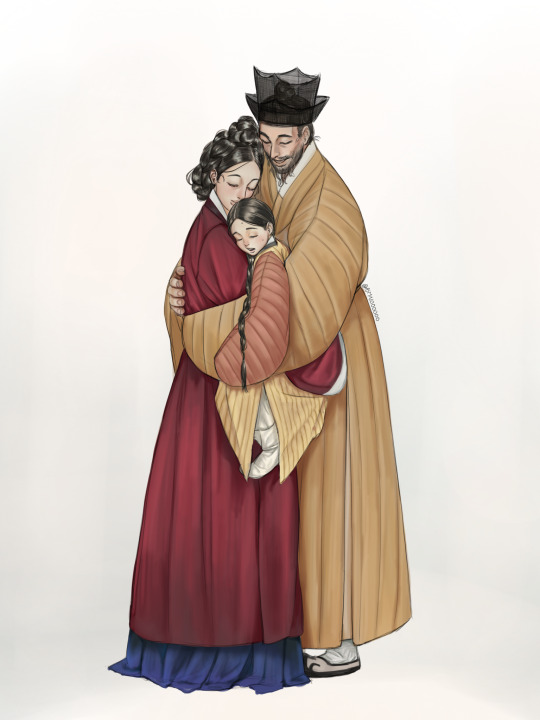
배경설명:
2001년 대한민국 경기도, 1600년대 후반의 조선시대 소년미라가 발굴 되었다.
소년은 발굴 당시 아버지의 겉옷(중치막)을 바닥에 깔고 어머니의 외투(장옷)을 덮고 있었다. 향년 여섯살이었고, 사인은 천연두였다.
조선 시대에는 아이가 사망하면 관 없이 매장하는 풍습이 있었지만 이 소년은 온갖 부장품과 함께 작은 관 안에 매장되었다.
Back story:
In 2001, a mummified boy from the Joseon Dynasty, dating from the late 1600s, was unearthed in Gyeonggi Province, South Korea. At the time of discovery, the boy was covering his father's coat (joongchimak) on the ground and his mother's coat (Jangot). He was six years old, and the cause of death was smallpox.
During the Joseon Dynasty, it was customary for children to be buried without a coffin when they died, but this boy was buried in a small coffin with all his belongings.
다큐멘터리
youtube
#my art#joseon dynasty#hanbok#joseon era#hanbok korea#south korea#korean#mummy#history#artists on tumblr#digital art#history art#Youtube
19 notes
·
View notes
Text

Prunus vase with inlaid bamboo and cranes, Korean, 13th Century
From the Museum of Fine Arts Boston
14 notes
·
View notes
Text


lee manik's paintings depicting scenes from the tale of shimcheong, a korean folktale preserved in shaman tales and the pansori opera shimcheongga. shimcheong lives with her blind father and sacrifices herself to the sea god to save him, but becomes the queen of the sea and returns to him and restores his sight.
29 notes
·
View notes
Note
i feel like keith could absolutely terrify normal/rational people (hunk, lance) by coming up with the weirdest most complicated way to fix the most simple problem. shiro is very used to it so he isn’t scared anymore
i think keith and pidge are two sides of the same raccoon-macgyver-packrat coin, but whereas pidge is a #WomenInSTEM👩🔬, keith is an unhinged liberal arts major
#I think keith plays the Oregon trail and wins every time#I still maintain that keith is the sole humanities major amid a sea of stem majors#allura is part of the larger liberal arts pool (she’s like international relations or something)#Keith is like a history major or maybe a Korean/Asian studies major#ask#anonymous#katiecanons#I guess
82 notes
·
View notes
Text
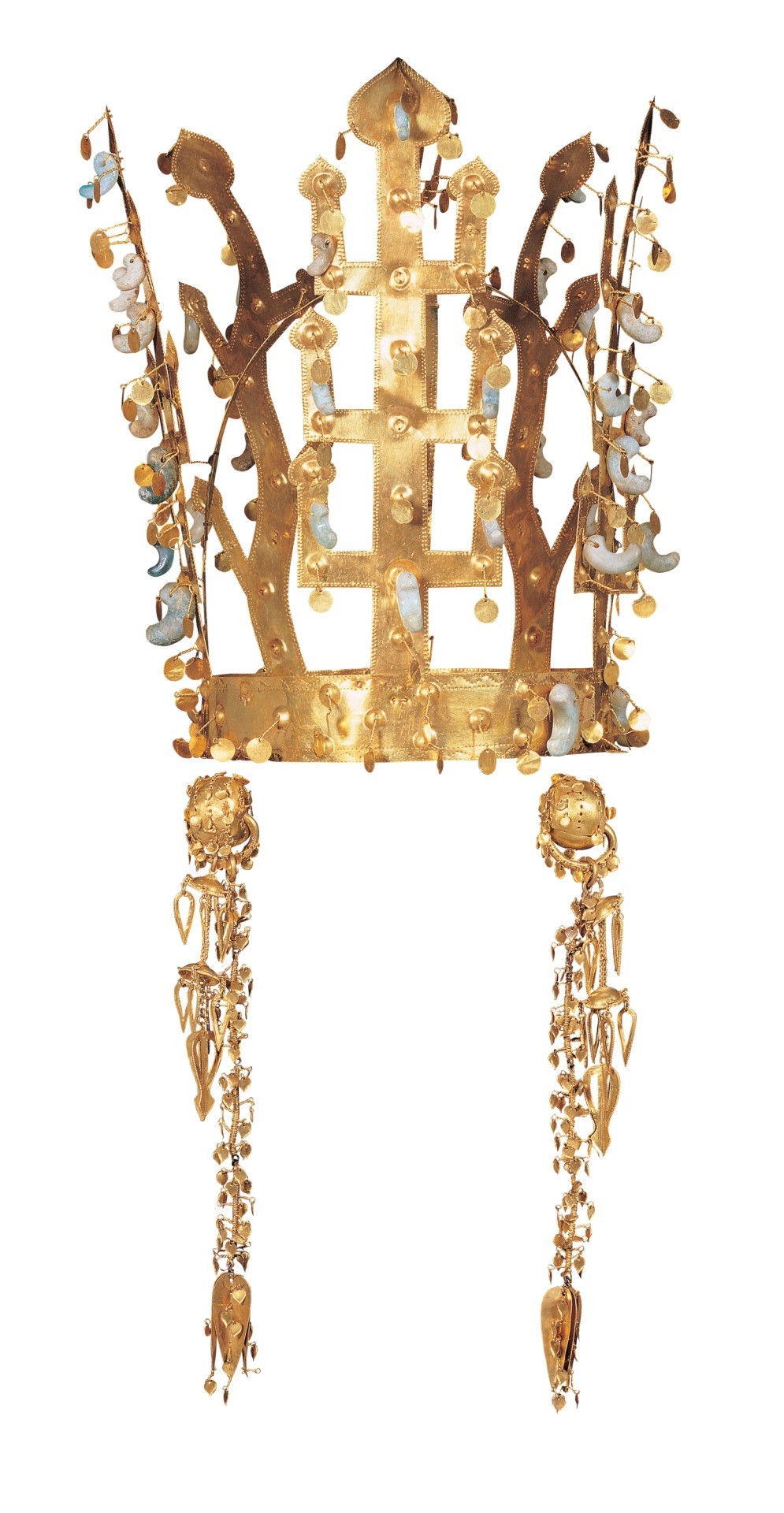
Gold crown excavated from the Seobongchong Tomb in Korea, 5th-7th century AD
from The National Museum of Korea
823 notes
·
View notes
Text
Meanwhile, some women [in South Korea] received an advanced education, like Na Hye-Seok, the country's first Western-style painter and an iconic writer. One of the so-called "New Women," Na was born in 1896 to a wealthy family and learned about feminism in Japan, where she studied the arts and read various feminist texts, including Henrik Ibsen's A Doll's House. The theatre play inspired Na's poem "Nora," a rallying cry for women to defy patriarchal norms:
I was a doll
As the doll of my father as a daughter
As the doll of my husband as a wife
I was their toy
Let Nora go […]
I am a person
Before being a wife of a husband
Before being a mother of a child
First, I'd like to become a person
[…] Ahhh girls
Wake up and follow behind
Rise up and radiate power
The bright light of the new day shined.
From “Flowers of Fire.”
#women’s history#south korea#women’s art#feminism#korean women#mypost#bookcitation#the more things seem to change
21 notes
·
View notes
Text


This Saturday begins our Culture Circles!! Join us to learn more about different marginalized communities, their customs, their music, their languages, EVERYTHING! And learn how you can support them on their journey to liberation! discord link in bio @bfpnola since tumblr kills links!
—
Other time zones [clock emoji next to each]:
Saturday, Sept. 23rd
⏰ 5 pm MT — Phoenix, Arizona, USA
—
Sunday, Sept. 24th
⏰ 12 am BST — London, United Kingdom
⏰ 4:30 am IST — Mumbai, India
⏰ 8 am JST — Tokyo, Japan
⏰ 9 am AEST — Sydney, Australia
#reaux speaks#resources#bipoc#undescribed#anti capitalism#queer#history#intersectional feminism#tamizh#india#language#linguistics#sami people#norway#norse#south korea#korean#culture#music#art#dance#discord server
31 notes
·
View notes